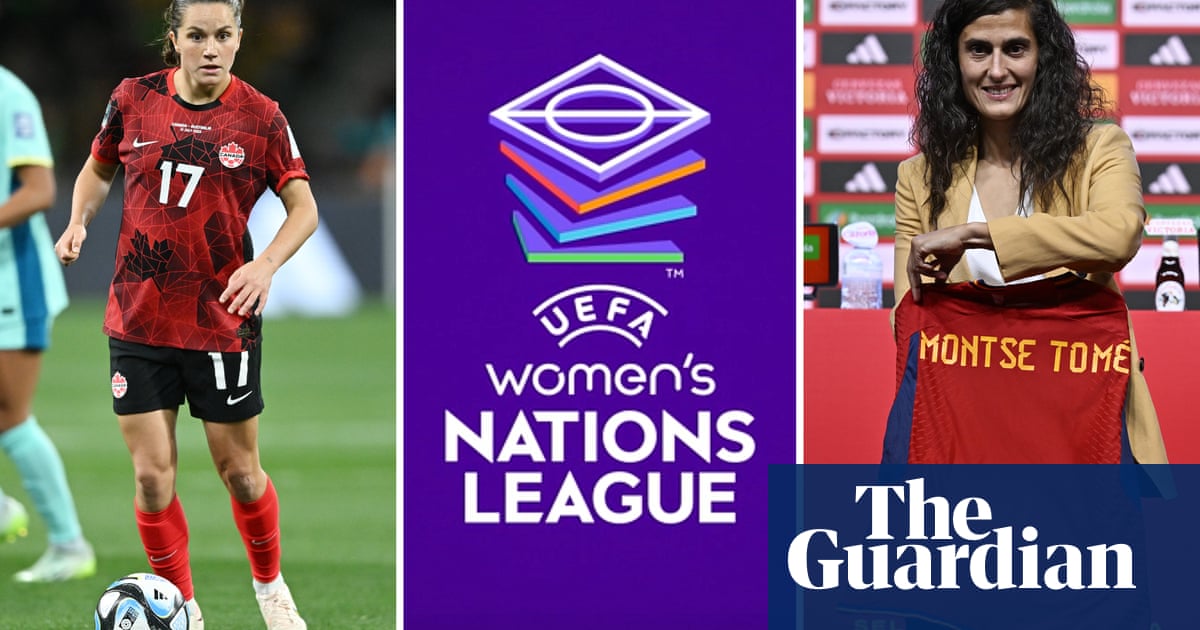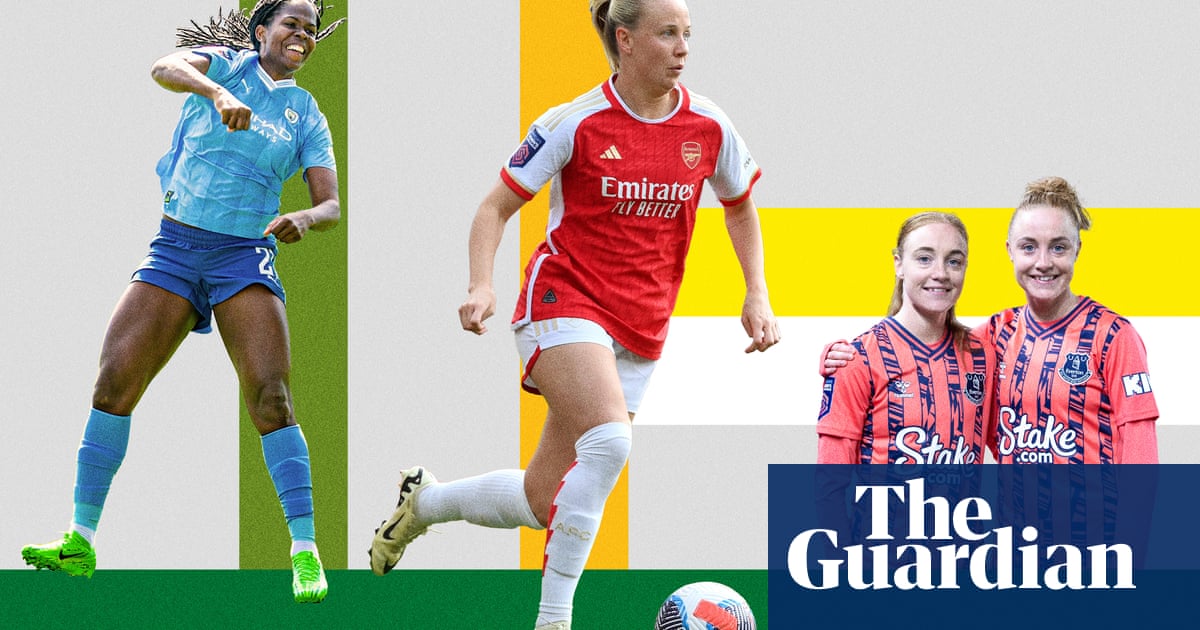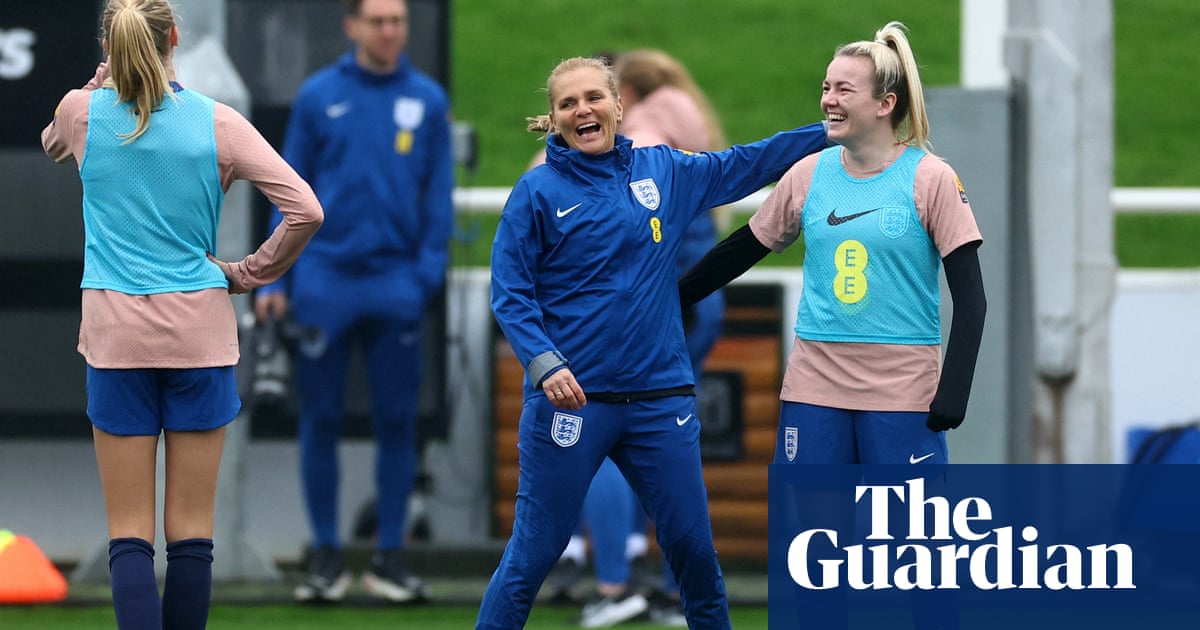
Blink and you will have missed the gap between international windows. A month on from the World Cup final in Sydney, players are back with their national sides as a new season begins.
In Europe, this comes in the form of an inaugural Nations League. Somewhat convoluted in nature and with a fair amount at stake, we examine Uefa’s brand new competition.
How did the Nations League come about?
In November 2022, Uefa approved its introduction as part of its strategy for women’s football. After its relative success in the men’s game, this new biennial competition provides a trophy and a format for European teams to qualify for major tournaments. The Uefa president, Aleksander Ceferin, said: “We have built an open, competitive, and continuous system in which every match will matter … I am convinced that this format will help all European national associations and keep the dream of qualifying for a major international tournament alive.”
How does it work?
Are you ready for this? Don’t worry if you don’t get it first time, it is a little complicated.
If you take major tournament qualification out of the equation, the Nations League itself will run from now until February 2024. Forty-one countries will compete in three leagues, decided initially by their Uefa coefficient ranking. League A and B have 16 sides each (split into four groups), while 19 are in League C (five groups – four of four teams and one of three). In the group phase, each nation will play their group members home and away, and promotion and relegation will take place between the three divisions.
The teams in League A are playing to win the Nations League with the four group winners progressing to the semi-finals, third-place match and final (to be played in February).
The rest is where it gets complex with the remaining teams playing for position for the next phase:
The first-placed teams in League B and C are automatically promoted.
The last-placed teams in League A and B, plus the lowest third-placed team in B, are automatically relegated to the division below.
For the rest, a playoff phase will run in conjunction with the final week: the third-placed League A teams play against the second-placed League B teams with the winners cementing a spot in League A. The same occurs between the three best third-placed teams in League B and three best second-placed sides in League C.
Everyone else remains as they were.
What is at stake?
Apart from winning the Nations League or being promoted, there are a further two prizes up for grabs in this inaugural edition.
First, how teams finish will determine their position for the Euro 2025 qualifying phase. This will run from spring to autumn 2024 and take on the same format, with 16 teams progressing. The top eight finishers in League A will qualify directly and Switzerland are guaranteed a spot if they are not one of them.
The rest – including some of the teams in League B and C – will head into the playoffs for the remaining Euro places. An explanation of that playoff system is for another day, but it will take place in the latter half of next year.
The more immediate prize at stake are Uefa’s Olympic spots at Paris 2024. Since France are hosts, there are two up for grabs. This means that to qualify, a nation needs to reach the final. However, if France are one of the finalists, the last place will go to the third-placed team. For Team GB to qualify, it will need to be England who do this as they are the nominated side.
Pros and cons
There is space for a whole piece discussing the positives and negatives of this new format. Briefly though, on the plus side, every game is now a competition where every point counts. In theory, all nations will be able to develop and have an opportunity to qualify for a major tournament. The hope is that the split between the teams will eliminate the cricket scores previously seen.
On the flip side, younger nations could be stuck playing against those of a similar level. If they are unable to get out of League C, they would never be exposed to or challenge themselves against those further ahead. In turn, for League A nations, there will be less opportunity to bed in youngsters and give core players a rest. You won’t see England playing their second-best 11 when there is an Olympic place on the line.
Big stories to look out for
With everything that’s happened within the Spain national team since the World Cup, all eyes will be on Gothenburg on Friday with Sweden scheduled to take on the world champions.
Elsewhere, an encounter between England and Scotland will always catch the eye. Denmark take on a troubled Germany, France host Portugal and the Republic of Ireland will play their first game at the Aviva, against Northern Ireland.
Quote of the week
“Let’s be clear: a claim was made today stating that the environment within the federation would be safe for my colleagues to rejoin yet at the same press conference it was announced that they were not calling me as a means to protect me. Protect me from what? And from whom?” – Jenni Hermoso in a statement published on Tuesday.
Recommended viewing
Yes, the goalkeeping is questionable, but this throw and eventual goal from Drake Women’s Soccer’s Zoey Mahoney is quite frankly ridiculous. Challenge: can you track the ball all the way into the back of the net?
To subscribe to the full edition of our free weekly women’s football email, Moving the Goalposts, just visit this page and follow the instructions.










